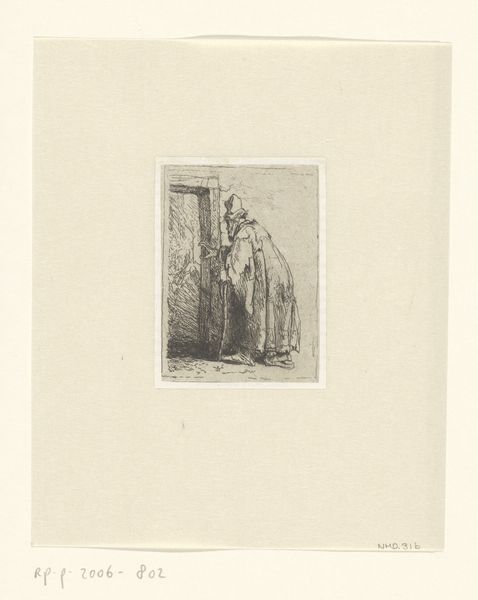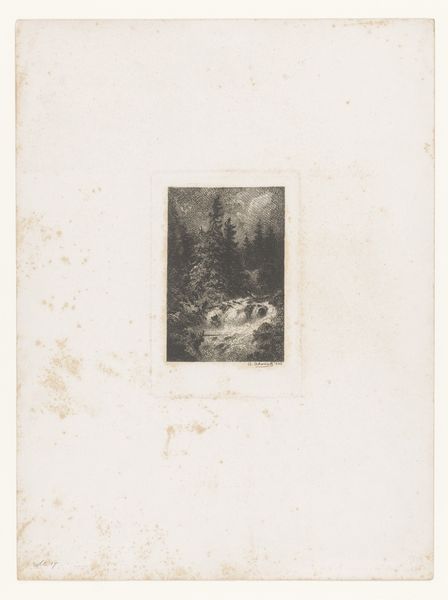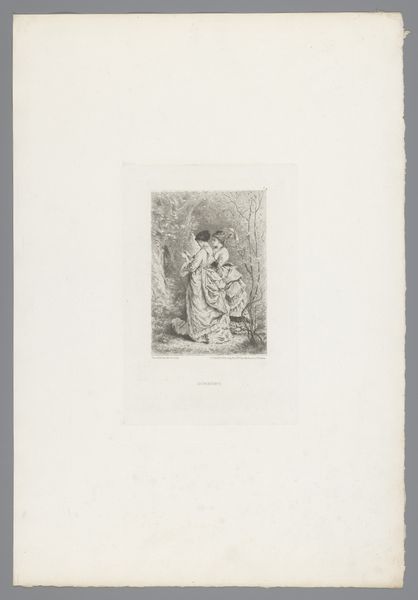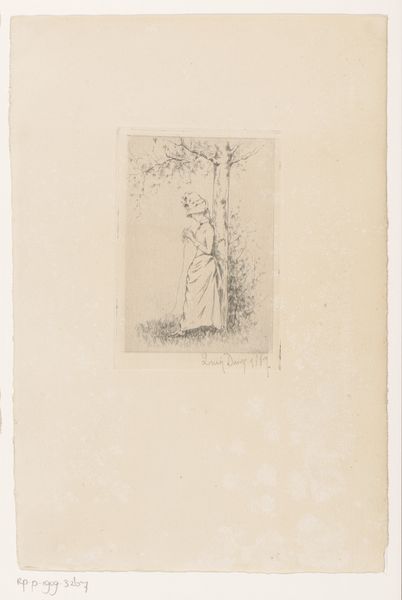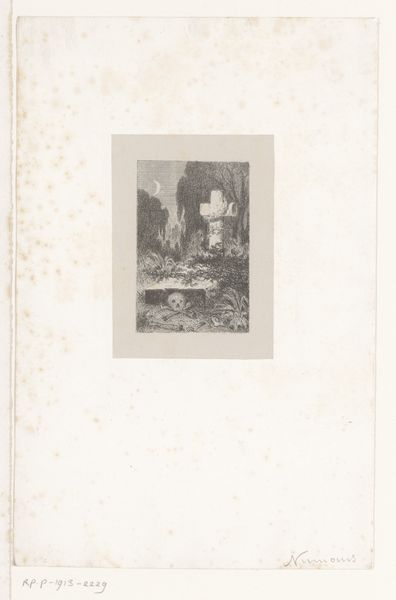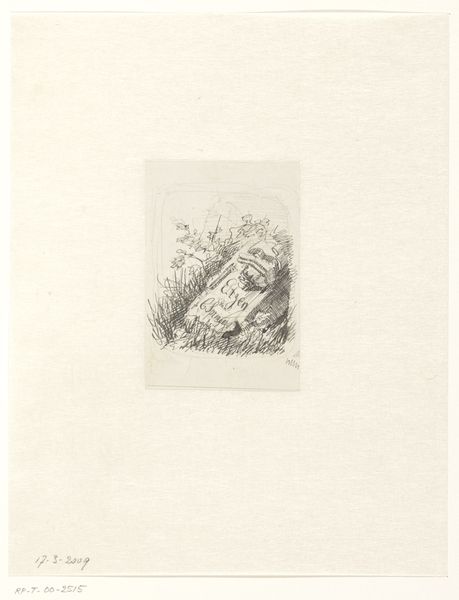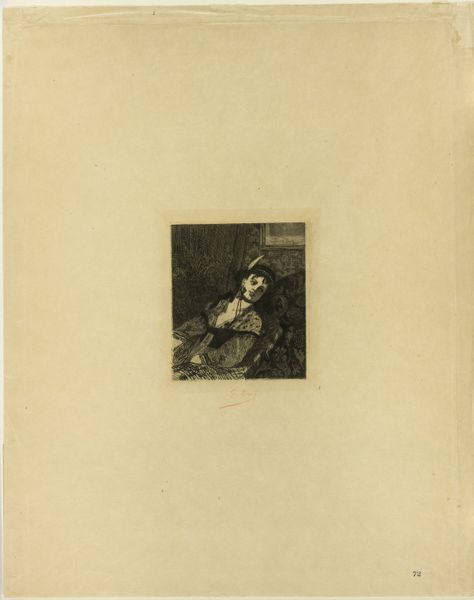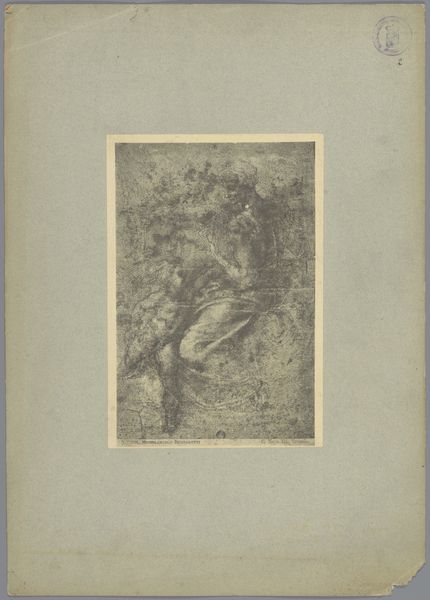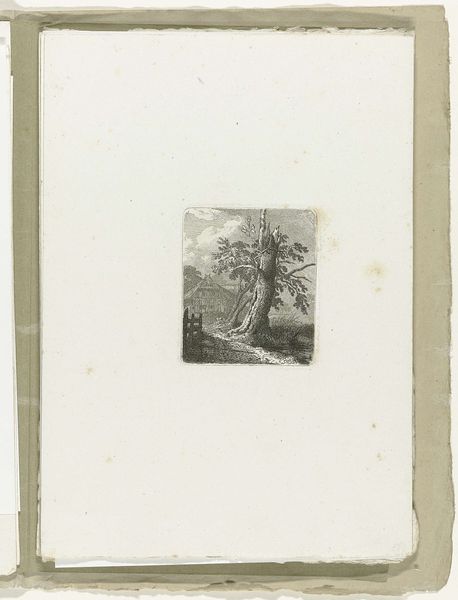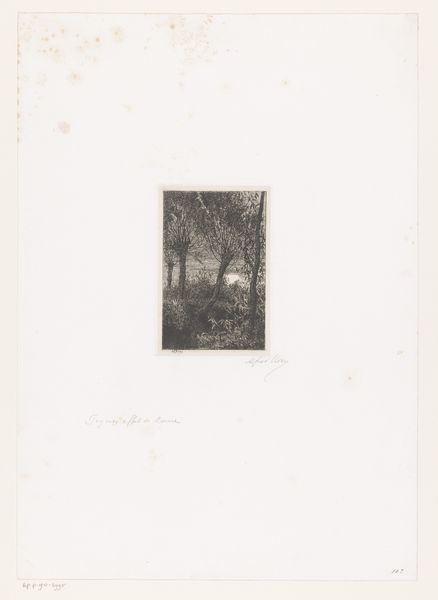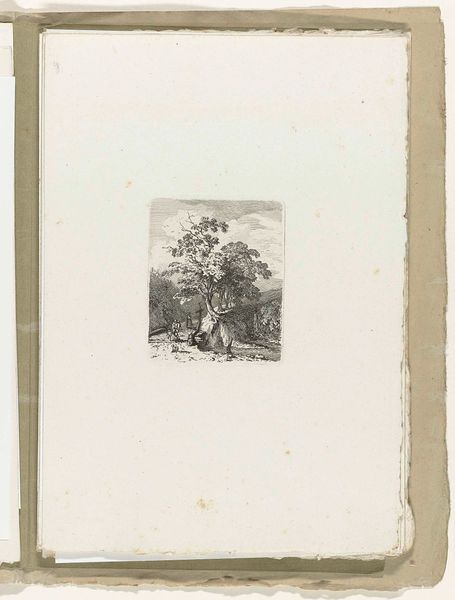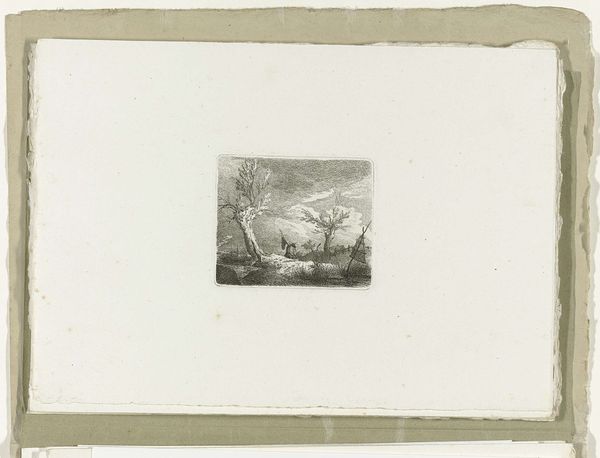
drawing, print, etching, paper
#
drawing
#
toned paper
#
light pencil work
# print
#
etching
#
pencil sketch
#
landscape
#
paper
#
personal sketchbook
#
romanticism
#
sketchbook drawing
#
sketchbook art
Dimensions: height 92 mm, width 62 mm, height 304 mm, width 225 mm
Copyright: Rijks Museum: Open Domain
Carl August Lebschee created this cover for a series of sixteen landscapes as an etching. The naturalistic style of the image reflects the growing interest in landscape art and its market in 19th century Europe. Looking closely, we see a dedication inscribed within the image, suggesting this may have been commissioned for a specific patron or audience. Etchings like this were often produced in multiples, making art more accessible and playing a role in shaping public taste. Lebschee worked in Germany, a region with a rich tradition of printmaking and a growing middle class eager to consume art. The institutional structures of the art world in Germany at this time, with its academies and art associations, played a significant role in promoting and regulating artistic production. To understand this etching better, we can consult historical archives, exhibition records, and biographical information about the artist and his patrons. By examining the social and institutional context, we can gain a deeper appreciation for the role of art in shaping cultural values and social identities.
Comments
No comments
Be the first to comment and join the conversation on the ultimate creative platform.
